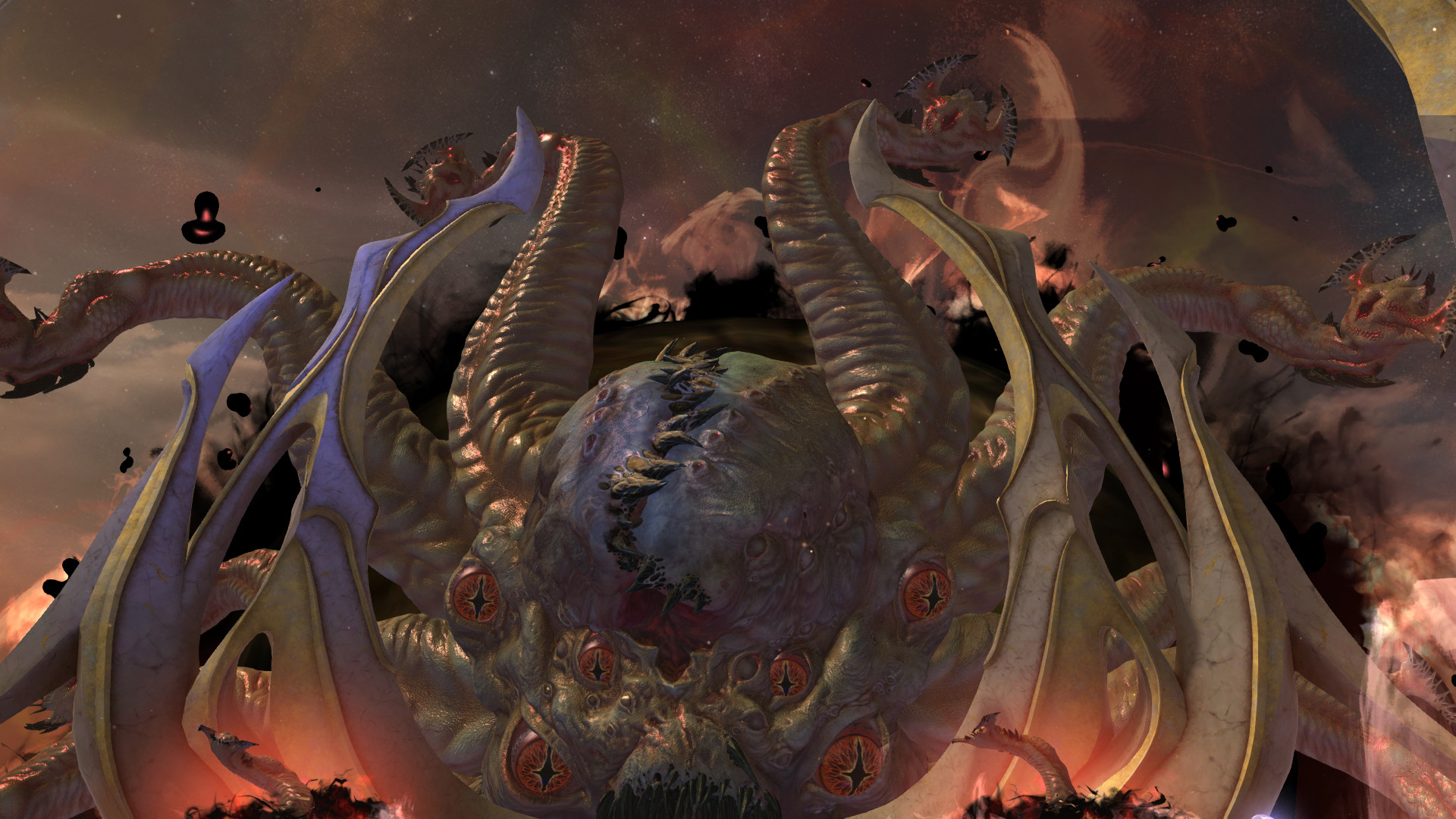
We're under two months away from the launch of Assassin’s Creed Shadows, the latest entry in the historical stealth series that has always impressed with its graphical detail and authentically designed worlds. The series has certainly has a place in history of open world game design, particularly on the best games consoles.
The Assassin’s Creed series has covered a lot of known history, however across the 13 mainline titles, eight console spinoffs, several mobile games, countless graphic novels, an audio drama, and a better-forgotten movie, there is one setting the series has never properly delved into despite near-universal pleas from fans: Japan. Until now, that is.
In some ways the timing couldn’t have been better. The world is primed for another Japan-set historical epic given the ongoing popularity of games like Ghost Of Tsushima, Rise Of The Ronin, and Nioh, and the runaway success of TV shows like Shogun (read our feature on how the Shogun's VFX was created). But it also means Assassin’s Creed Shadows’ dev team has work to do if its game wants it to stand out, and Ubisoft generally as a point to prove after the visually arresting but buggy Star Wars Outlaws.
AC Shadows offers two heroes, two styles
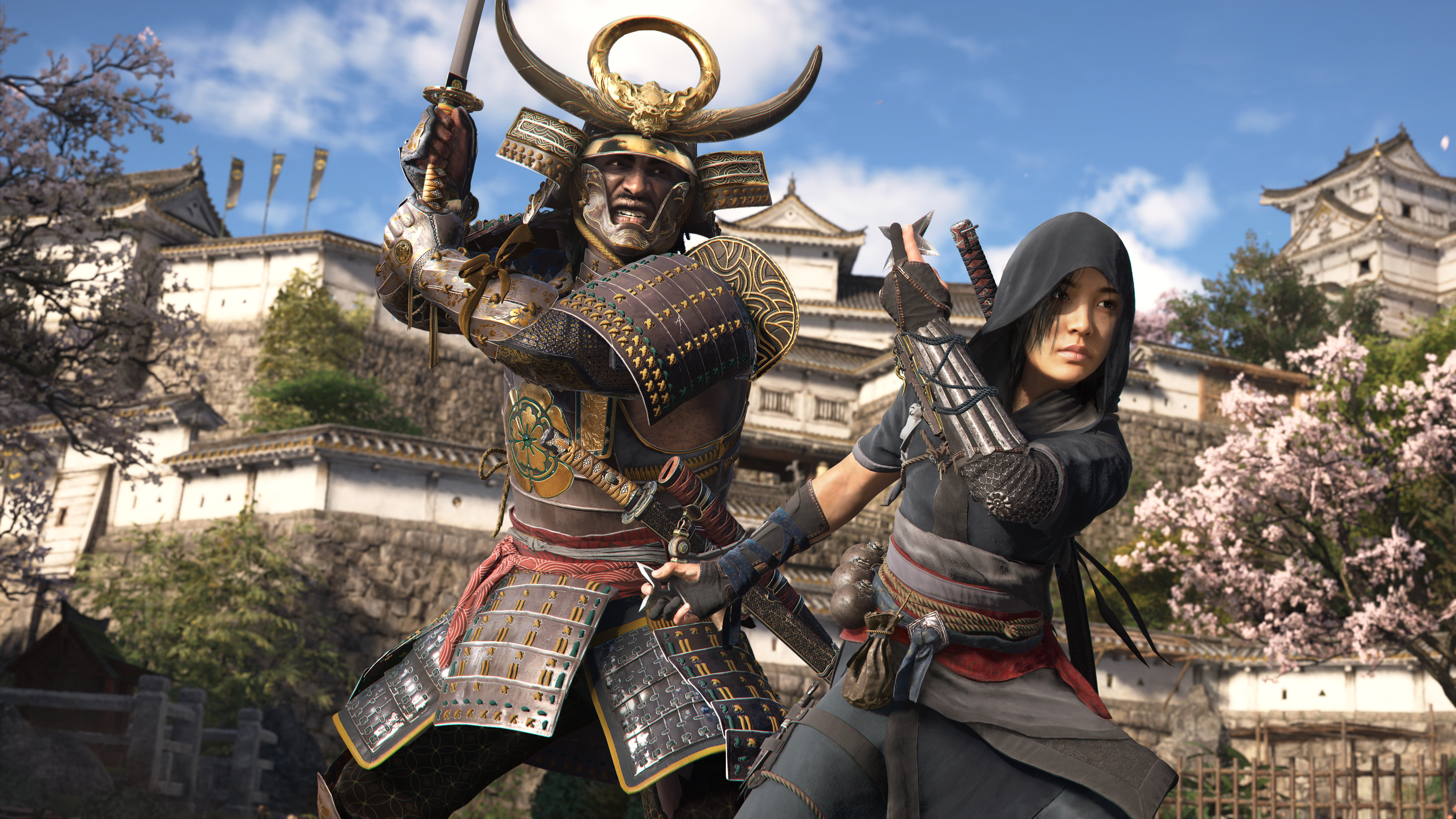
Assassin’s Creed Shadows follows dual protagonists Fujibayashi Naoe and Yasuke through Japan’s war-torn late Sengoku period. Much like previous AC games, the story walks the line between historical accuracy and wild fiction where you fight godlike beings.
While Naoe, a kunoichi (a term often used for female ninja or shinobi), is an original character, her father in the game, Fujibayashi Nagato, was a real person who led the Iga jonin (again, what we’d call ninja today).
On the other hand, the second protagonist, Yasuke, is completely based on a real historical figure – the first time Ubisoft has done so for an Assassin’s Creed protagonist. Thought to have been brought to Japan from Africa by Western priests, he was enlisted by Oda Nobunaga (who has himself appeared in plenty of games) as a samurai. With scant historical record, especially after 1582, Yasuke’s unusual position as the first Black samurai has sparked the imagination of historical fiction writers for many years.
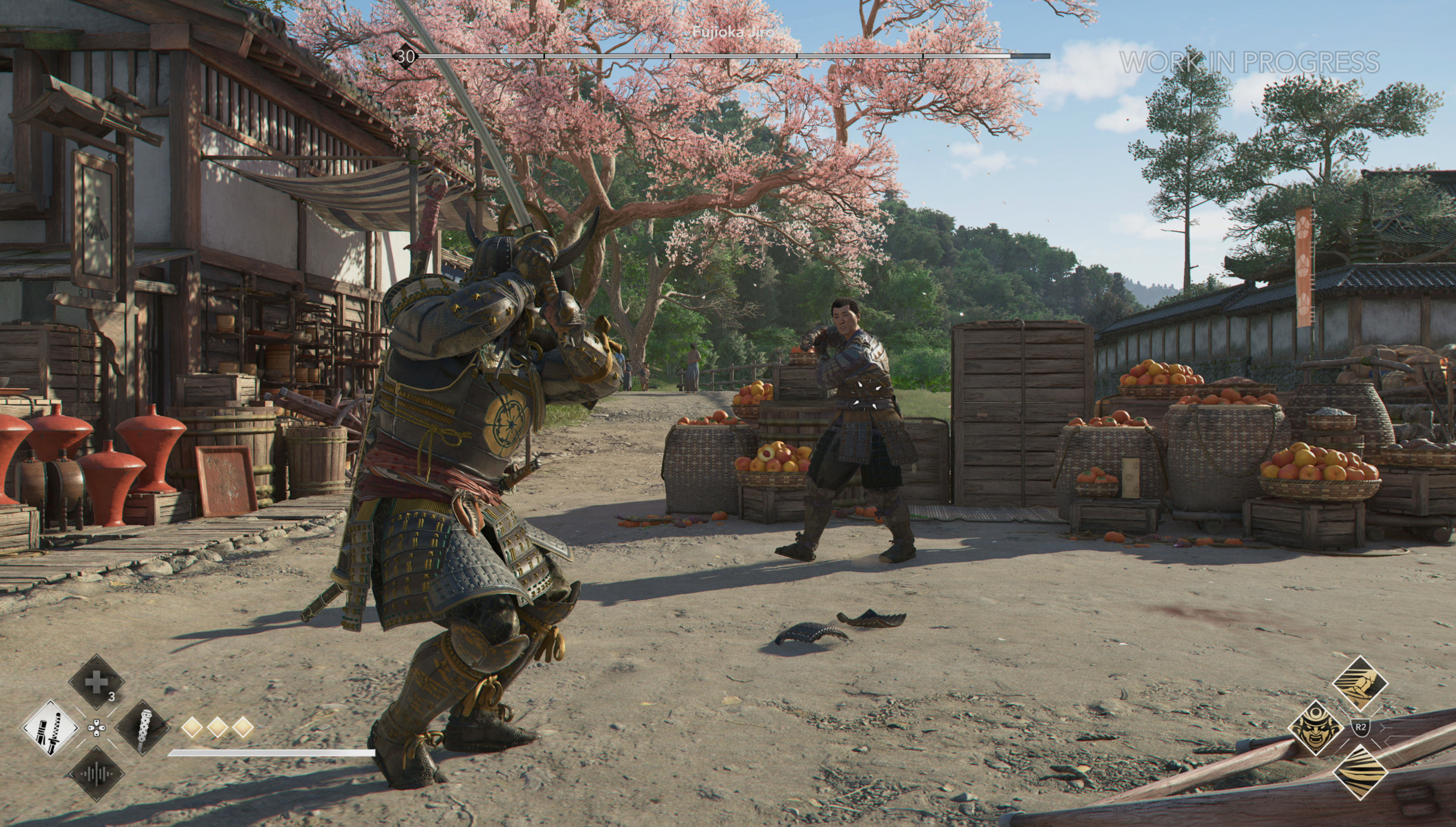
The doubling up of protagonist helps distinguish Shadows. It’s not the first time Assassin’s Creed has starred two heroes – Syndicate featured both Evie and Jacob Frye (later games gave you the choice of a female or male hero, but the one you chose was the solo star). That one was developed by Ubisoft Quebec, as is Shadows, and the slight focus on stealth for Evie and brawling for Jacob even mirrors the divide between Naoe and Yasuke. But almost a decade has passed between the two games, giving the devs time to hone playing with dual heroes to a fine point.
Get the Creative Bloq Newsletter
Daily design news, reviews, how-tos and more, as picked by the editors.
Naoe and Yasuke contrast not just narratively, but mechanically. In my demo, Yasuke take on samurai in a village brawl, before Naoe breaks into Fukuchiyama castle using a nocturnal storm as cover for an assassination. However, I'm also shown how differently the castle break-in can go if you take a different approach as Naoe, or pick Yasuke to tackle it.
Naoe plays like a more traditional Assassin's Creed character; her nimble movement and assassin’s robes help facilitate her jumping between rooftops unnoticed, while a grappling hook (which seems to function similarly to Jin Sakai’s in Ghost Of Tsushima) helps her cover wider gaps. It’s worth noting that her movement and parkour seem to be more in line with the original games. She needs to find discrete handholds to methodically clamber over surfaces, lacking Eivor’s and Kassandra’s uncanny ability to scale almost any surface.
I'm sure there’ll be plentiful pagodas to enable Naoe to get the drop on enemies, but staying hidden isn’t just a matter of taking the high road. She’s got more stealth options than almost any previous assassins, including the ability to nab a reed to breathe while submerged underwater, and to go prone, taking a page from Solid Snake’s book to crawl along the ground inch-by-inch while remaining unseen.
This isn’t to say Naoe is useless in a fight, though she’ll get hurt more easily than the heavily armoured Yasuke. Our first look ends with the swift assassination of Lord Hayashi at the point of a hidden blade before a chaotic fight as his men run in to take revenge. The counter-and-dodge-based combat is similar to that of Assassin's Creed Mirage’s throwback to the original games. But sometimes it’s best to cut and run, and Naoe escapes.
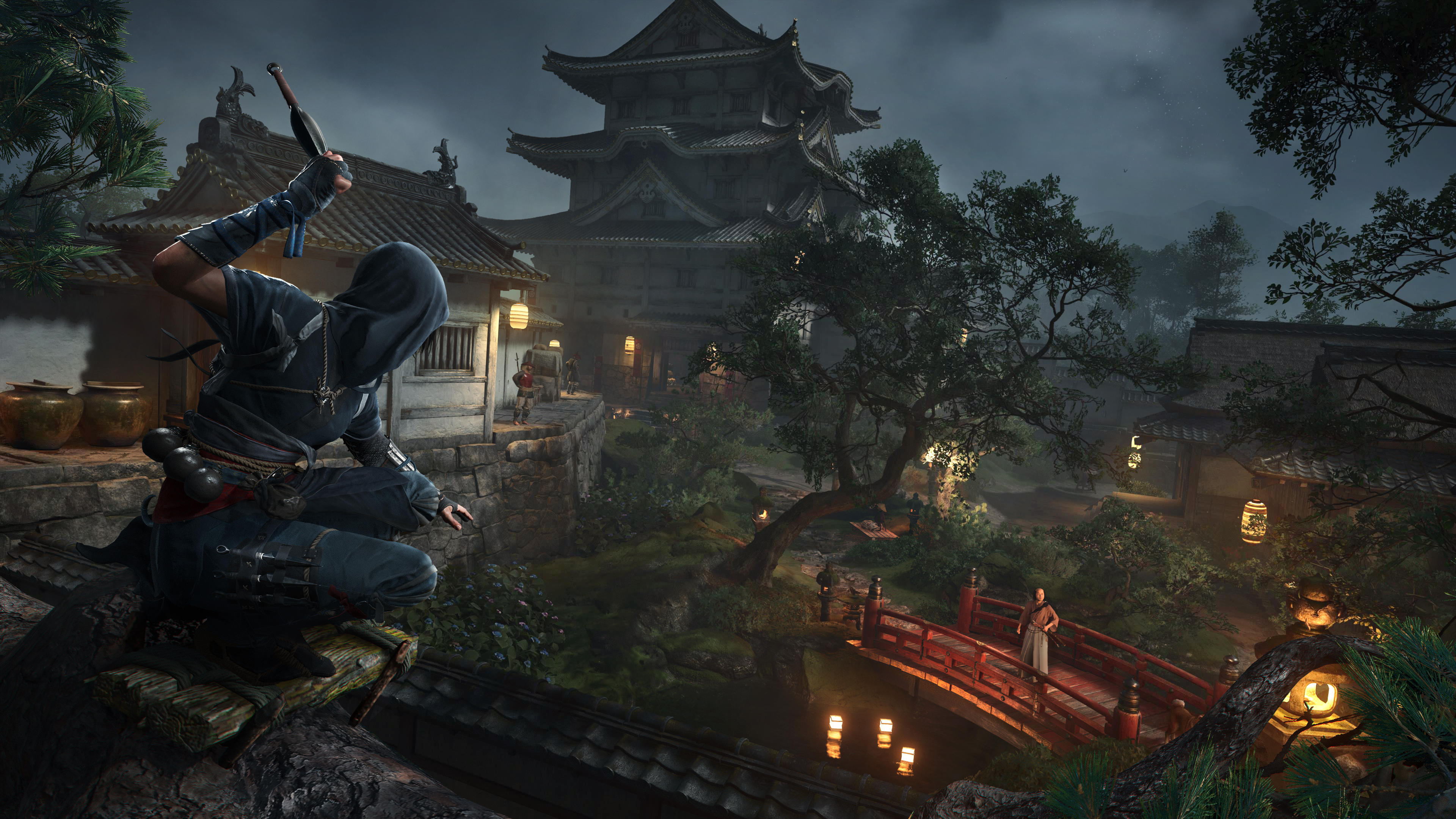
Naoe might be a silent assassin, but Yasuke is built like a brick outhouse… if that brick outhouse was clad in armour and decked out with state- of-the-art (for the era) weaponry. Rolling back to the village brawl with Yasuke, we take a look at what would happen if he kept going from there. Yasuke is more headstrong than Naoe, and as a result, he doesn’t bother waiting for the cover of night. He’s also not as nimble as his co-protagonist since he’s weighed down by that aforementioned heavy samurai armour. Instead of dashing across rooftops, Yasuke goes through the front door… literally. The only equipment he needs to deal with a lock is his shoulder and a good run-up.
He can make short work of towering guards as well, though you may want to pull out his brutal kanabo spiked club to do so. It’s hard to overstate just how vicious and satisfying the thing is thanks to the devastating animations of hard-hitting carnage, and how enemies ragdoll through the air and tumble across the floor, each hefty swing pushing through Hayashi’s guards like they’re nothing.
With Yasuke it’s a case of tackling problems head-on rather than going over and above them. He’s like a one-man army. His club and katana are just the start, as he also carries
a gun for ranged encounters. Matchlock guns were a core weapon during the bloody Sengoku era – and this helps set AC Shadows apart from the likes of Ghost Of Tsushima (set 300 years before this game). As well as extreme civil war, Japan was also dealing with external pressures. Yasuke’s own lord, Oda Nobunaga, was just one of many clan leaders who sought to unify Japan. In 1579, towards the end of the Sengoku period, throughout AC Shadows one of the bloodiest periods in Japan’s history is all coming to a head.
AC Shadows feels physical
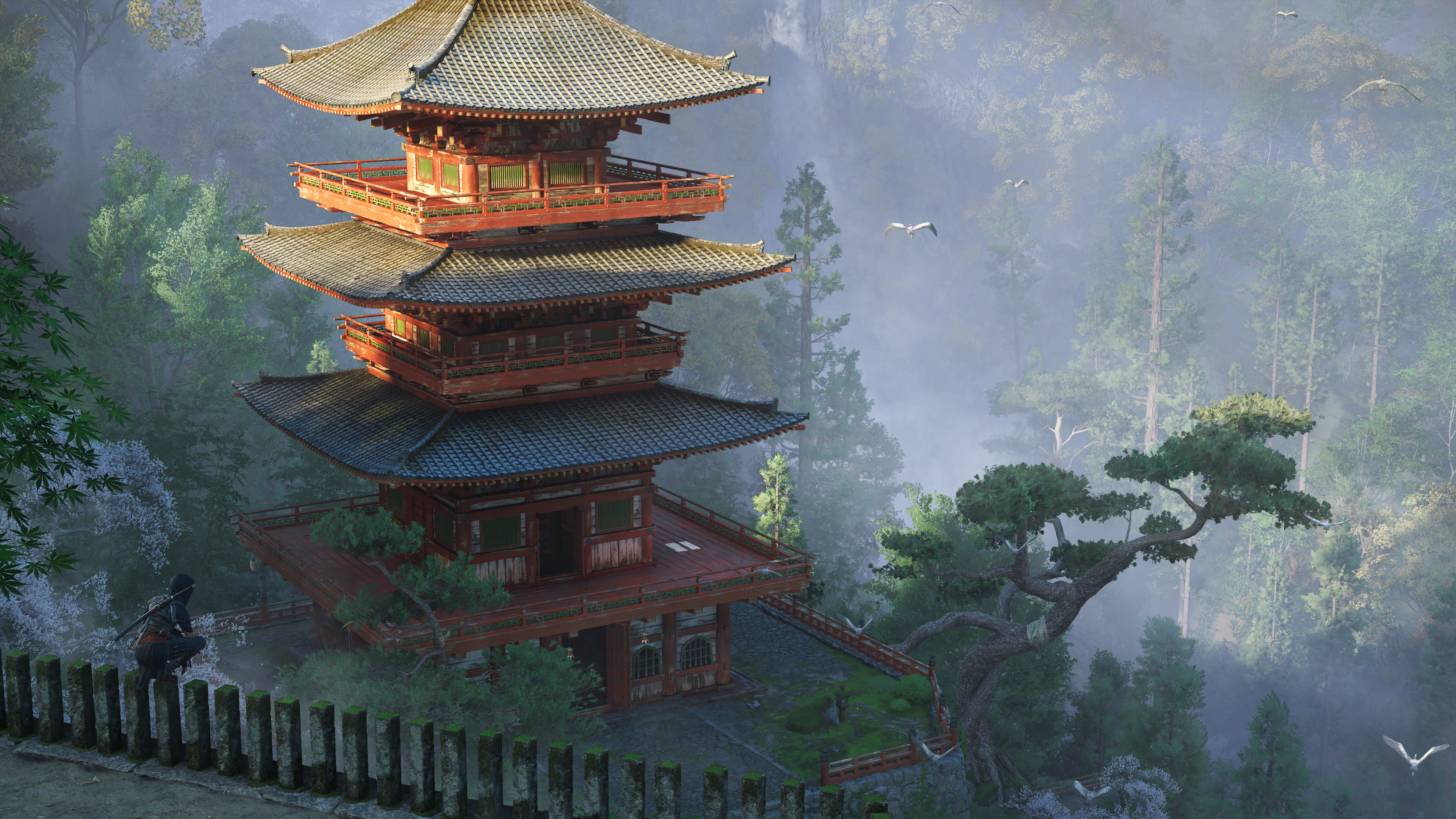
It’s not the first time Assassins Creed has embraced weighty, meaty combat. Yasuke’s fighting style is similar to the RPG fighting of Assassin’s Creeds from Origins to Valhalla, where dodging is de-emphasised in favour of blocking and parries and it’s more about wearing down an enemy’s stamina to open them up to devastating blows. But in having two characters, Ubisoft
Quebec has given itself more room to lean into going ham with big weapons as Yasuke rather than forcing a character who looks like a bodybuilder carrying a great axe to hide behind cover to pull off stealth kills as was the case in past games.
That said, like in those games, both Naoe and Yasuke have access to special attacks triggered by holding i and pressing a face button, activating moves like Yasuke’s area-of-effect jumping club slam. It appears that each character’s weapons will have three special attacks, operating on cooldowns.
Naoe’s combat prowess comes to the fore in our third look at the castle break-in. This time Naoe opts not to wait for nightfall, also choosing to mount an assault in broad daylight. Rather than employing pure stealth, we see our fleet-footed protagonist taking on guards more than twice her size by jumping out of hiding for one-on-one encounters, then losing heat in order to pull off another surprise attack. It’s definitely more like the combat of the original trilogy as Naoe’s diminutive stature means she relies more on dodging and deflecting than brute strength, albeit with a few special attacks.
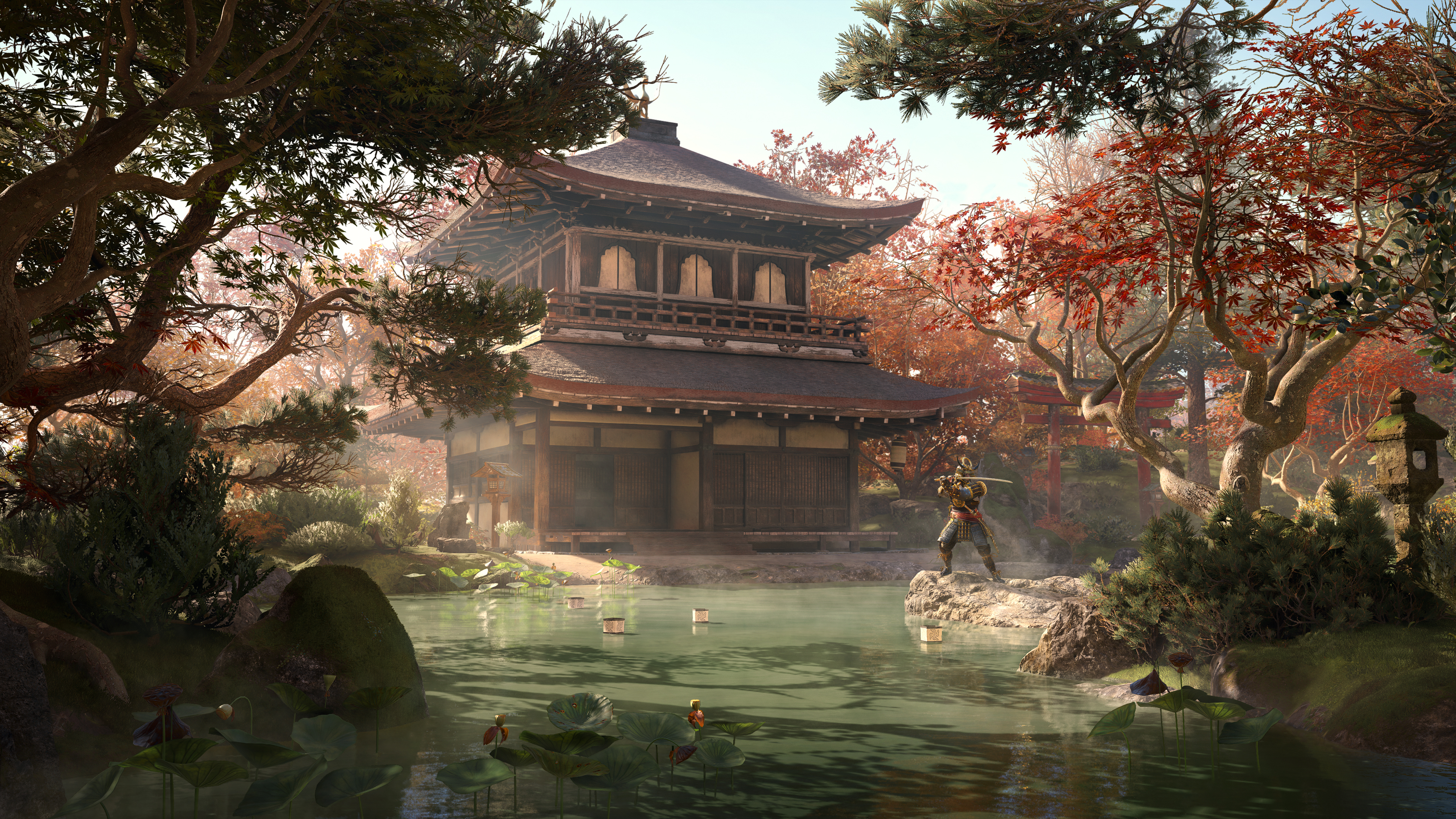
Like Yasuke, Naoe is well-armed; in addition to her katana and hidden blade she’s got shuriken that she can throw from the rooftops, plus other assassin tools we’ve come to know and love, such as the smoke bomb. It makes for incredibly satisfying, fast stealth that’d make the likes of Ezio blush as Naoe clears the encampment in broad daylight like, well… a shadow.
It’s great to have the choice of playing loudly or quietly depending on what you want, though we’ve yet to see if we’ll always have the option. At one moment in our demo, during a stealth assassination, Naoe is grabbed by a large enemy, flung into supplies, and then swarmed by enemies. Is that the result of messing up a prompt, or a scripted encounter?
The good news is that Naoe is more than capable when things go sideways, thanks in large part to a combination of her special attacks and kusarigama (a hook-and-chain weapon). It’s nice to see a return to the hyper-animated dodging and parrying fans of the older games have been yearning for, but we’re not sure if the existence of the special attacks (which often seem to be one-hit kills) on cooldowns will trivialise some of the challenge and fun of these encounters. It’s an odd choice given Yasuke is already right there.
Out of the shadows, Assassin's Creed looks stunning
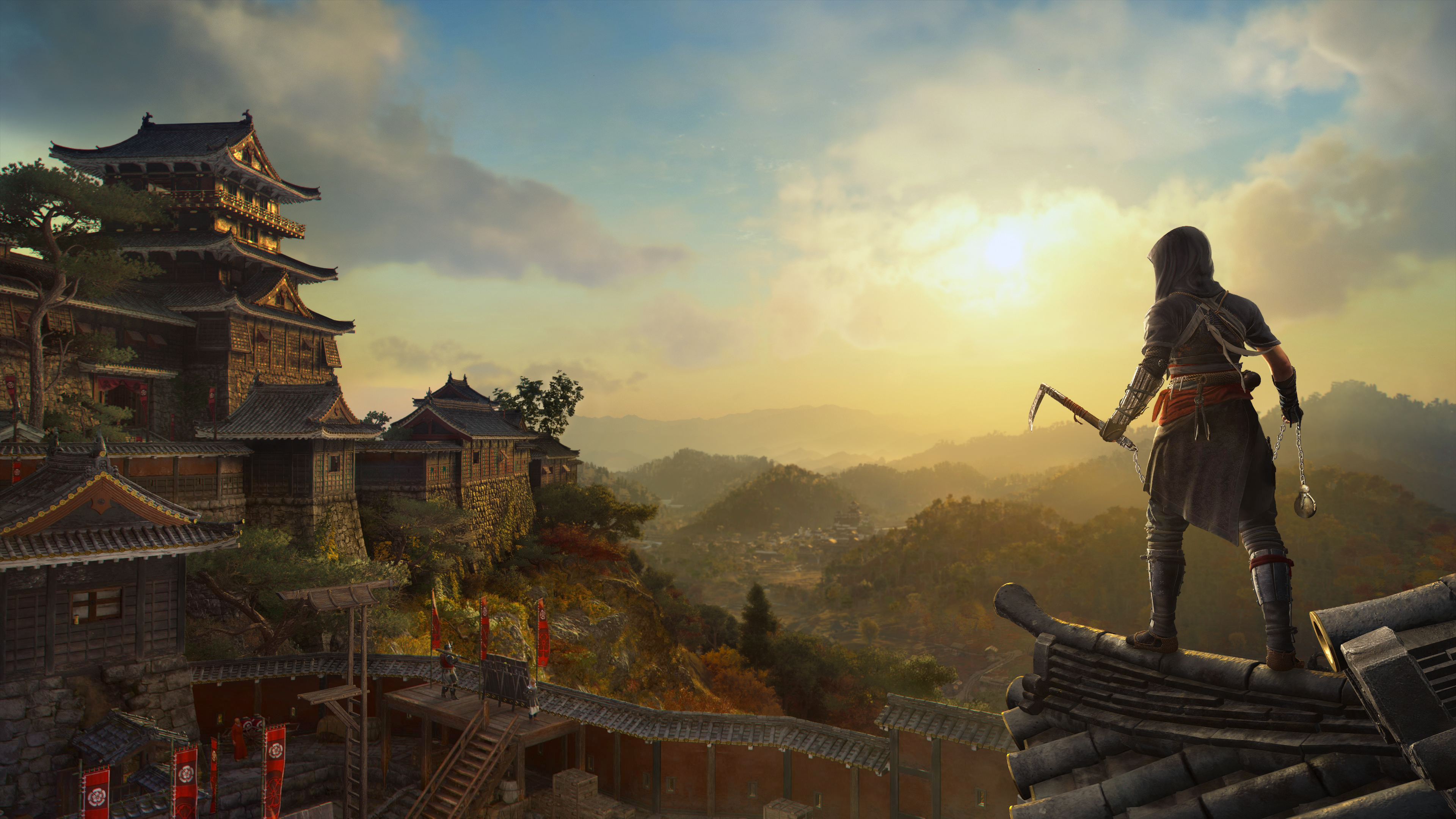
That’s just one mission. There’s a lot to the game beyond sneaking or fighting, and lots of systems that’ll influence how you approach those things. A day/night cycle and seasonal weather will impact things greatly. During Naoe’s night infiltration, as the storm rages the rain spitting down seems to hinder enemies’ senses by lowering visibility and drowning out some of our noise.
What’s more, during the daytime encounter we can hear and see the storm rolling in, grey clouds slowly engulfing the sky and thunder occasionally pounding overhead. Ubisoft has talked a lot about how seasonal weather might impact action, giving the example of breaking icicles to distract enemies during the winter. However, it remains to be seen how systemic these mechanics are and if they will truly affect the experience to the point that one player taking a mission in August will have a different experience to someone doing it in November.
Nevertheless, with near-countless ways to approach these more traditional Assassin’s Creed missions, we’re eager to play more. But we still have some questions. How well-realised will Yasuke and Naoe be, given the game has to split attention between the two of them? (Dialogue between them feels stilted in what we’ve seen – though it’s early in their relationship here). Will the meta-progression be laden with colour-coded loot like previous ‘RPG-style’ entries? And, most importantly, how much impact will the modern-day storyline have?
While Valhalla left the door open for plenty of weirdness, it feels like more casual Assassin’s Creed fans are beginning to tire of how convoluted that story has become, just like they did with Desmond’s arc. Yet that game’s ending implications feel too large to go ignored here. But as for the question as to whether all the years asking for Assassin’s Creed to tackle Japan has been worth the wait? I'm feeling optimistic.
Inspired by our time with Assassin's Creed Shadows? Then read our guides to GameMaker, Godot and Unreal Engine 5 and explore how games are made.

Thank you for reading 5 articles this month* Join now for unlimited access
Enjoy your first month for just £1 / $1 / €1
*Read 5 free articles per month without a subscription

Join now for unlimited access
Try first month for just £1 / $1 / €1
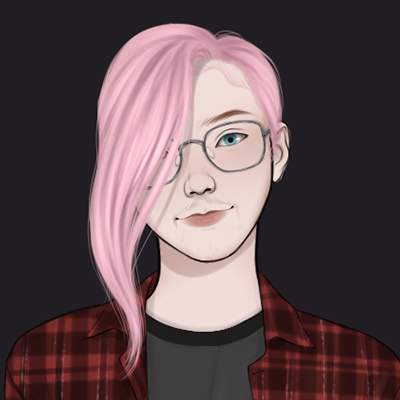
Lex Luddy is a freelance journalist and writer in the games industry, they are the EiC of the independent publication startmenu and are currently obtaining their bachelor's degree in journalism at the National University of Ireland, Galway.
